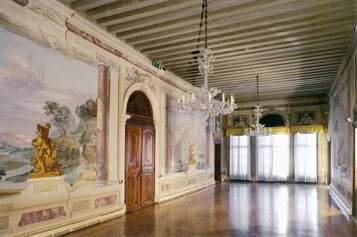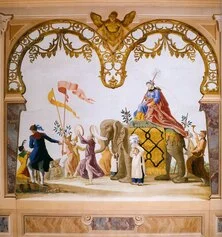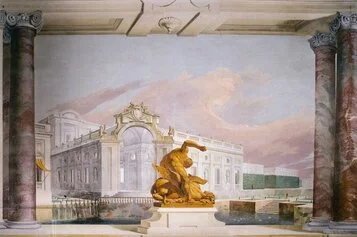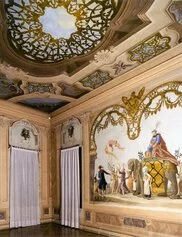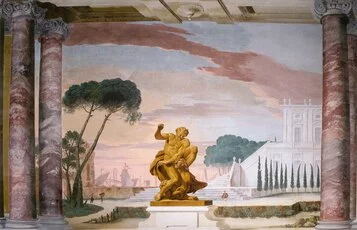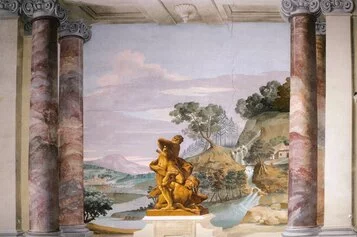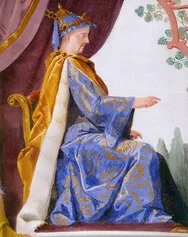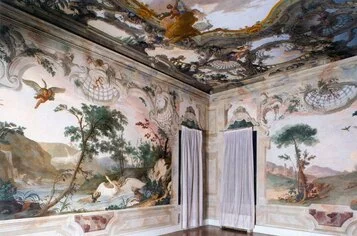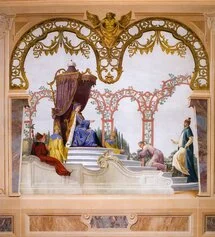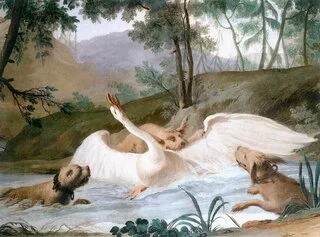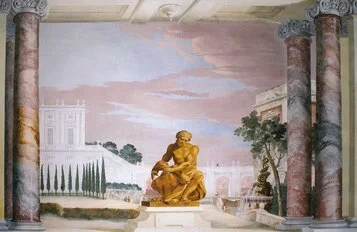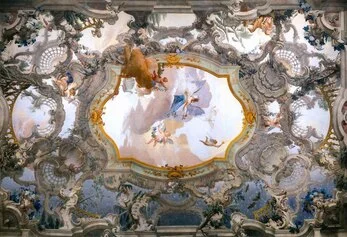The villa stands on a medieval castle of the Delesmanini family, who ceded the land on which the villa stands to Enrico Scrovegni (commissioner of the Scrovegni Chapel in Padua). After the war of 1405 between Padua's da Carrara family and powerful Venice, the villa was bought by the Trevisan family of Noventa, who sold it in 1502, describing it as "a large house in masonry with a courtyard all around enclosed by a wall with a few fields by the river Brenta" to the patriarch of Aquileia Domenico Grimani.
Throughout the sixteenth century the villa was the residence of the powerful Venetian family until, in the early 1600s, a young Grimani married Vettor Calergi. Thus was born the Grimani-Calergi branch, which maintained the property throughout the century.
Between the seventeenth and eighteenth centuries, the extinction of this Venetian noble family came, and a nephew, Nicolò Vendramin of San Marcuola, was appointed heir in 1738 due to lack of direct descendants. The last Vendramin-Calergi heir was Countess Elena Marina Maria who married Count Andrea Valmarana, who left her a widow in 1861.
In her will, the countess bequeathed the villa to the municipality of Noventa Padovana with the obligation to establish a school for deaf-mute girls and not to move the portrait of the countess and her husband from its original location. the institute for deaf-mute girls began operating in 1909.
During World War II the villa was used as the Military Hospital of Padua.
The structure of the villa, characterized by the raised central crowning connected to the part below by volutes (which certainly underwent remakes) with advanced wings on the sides, appears in all its wide and solid volumetry, within a fairly recent park. Inside the villa there are vast eighteenth-century fresco complexes and Rococo chinoiserie decorations that embellish the piano nobile: this decorative cycle, the work of the stage designer and painter Andrea Urbani, represents for Noventa the true swan song of eighteenth-century Venetian painting, which at one time also found evidence in this villa in three canvases by Giovan Battista Tiepolo. Behind the villa passed the Brenta River; in fact, originally, the main facade was at the rear of the present villa.
